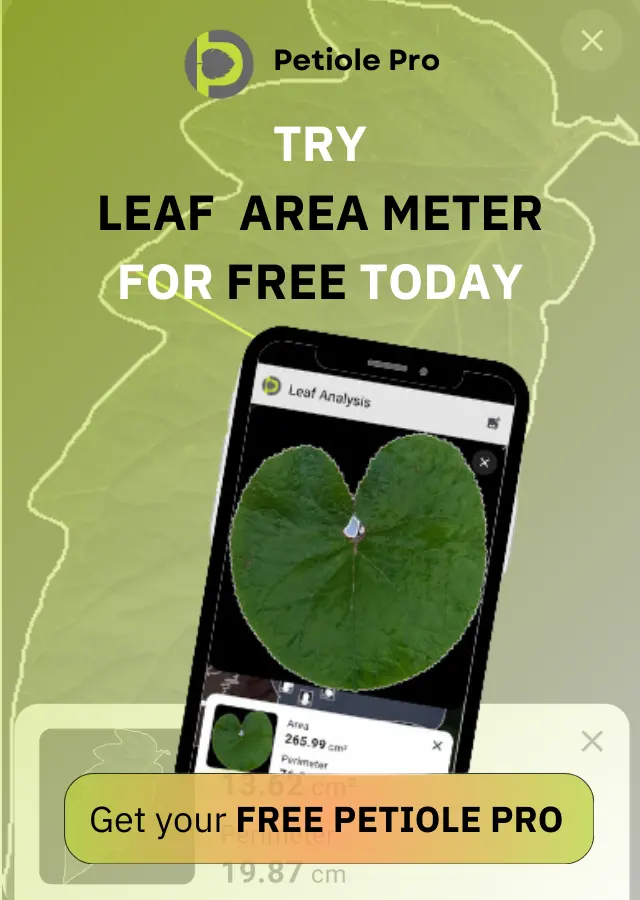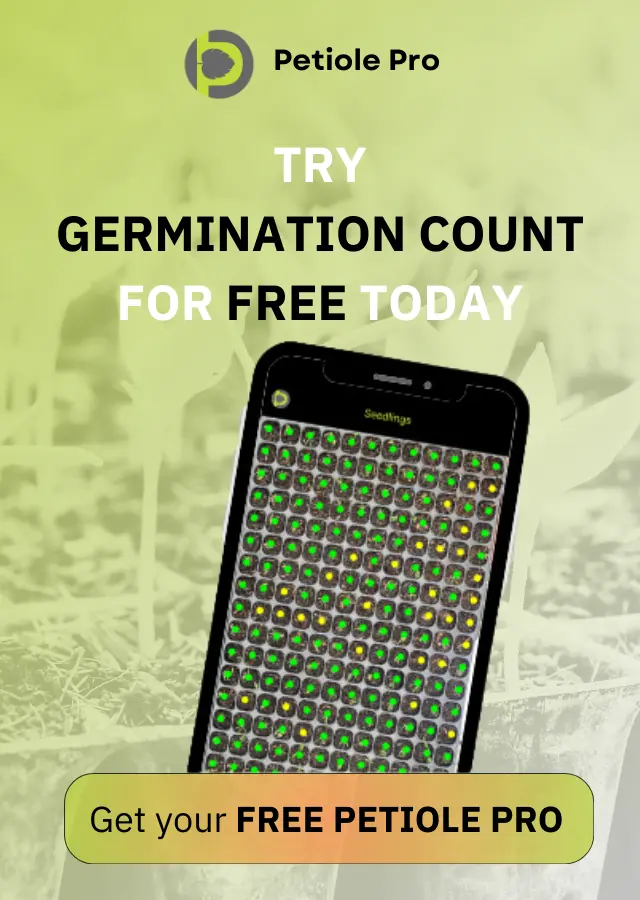A Comprehensive Guide to Non-Destructive Leaf Area Measurement


Benefits of Non-Destructive Measurement
Non-destructive leaf area measurement offers several advantages:
- Enables continuous monitoring of individual leaves over time
- Preserves plant integrity, crucial for long-term studies
- Ideal for rare or valuable specimens
- Allows for repeated measurements without plant damage

Challenges and Solutions
While non-destructive measurement is beneficial, it presents certain challenges:
-
Leaf curvature and positioning: Example: Consider measuring the leaf area of a large monstera plant. Its leaves often have natural splits and curves, and they may not lie flat against a surface. A leaf might be positioned at an angle on the stem, making it challenging to capture its full area in a single, flat image. In this case, you might need to carefully position the leaf or take multiple images from different angles to ensure accurate measurement.
-
Variable lighting conditions: Example: Imagine measuring leaves in an outdoor setting throughout the day. In the morning, dappled sunlight through tree canopies might create uneven lighting on your subject leaf. By midday, harsh direct sunlight could cause glare or deep shadows. Later, overcast conditions might reduce contrast. Each of these lighting scenarios can affect how well your camera and the app distinguish the leaf edges, potentially impacting measurement accuracy.
-
Difficulty in leaf-background separation: Example: Picture trying to measure the leaf area of a fern growing among other plants. The delicate, lacy edges of fern fronds can be hard to distinguish from surrounding foliage or a complex forest floor background. In this situation, even with a contrasting background plate, the app might struggle to accurately define where the leaf ends and the background begins, especially if there are shadows or similar-colored objects nearby.
These examples illustrate why it’s crucial to pay attention to your setup, potentially adjust your environment or technique, and use the app’s advanced features like different segmentation methods to overcome these common challenges.
Step-by-Step Guide to Non-Destructive Leaf Measurement
Required Equipment
- Smartphone with a high-quality camera or a tablet
- Petiole Pro application
- Calibration plate (provided as DIY in the application or purchase at Petiole Pro Store)
Measurement Procedure
- Preparation:
- For small leaves with adequate petiole length: Place the leaf on the calibration plate.
- For large leaves: Position the leaf on a contrasting background with the calibration plate adjacent to it, ensuring all 8 markers are visible.
- You can place more than one leaf within the frame, using space on the calibrating plate and next to the calibrating plate.

- Image Capture:
- Ensure the entire leaf and calibration plate are within the frame.
- Maintain steady positioning and good light while capturing the image.

- Image Processing:
- Upload the captured image to the Petiole Pro application.
- Select the appropriate segmentation method (Threshold or HSV) by accessing the settings via the gear icon.
- Threshold: Suitable for high-contrast scenarios
- HSV: Preferable for complex lighting or backgrounds

- Image Refinement: if necessary, utilize the white line tool to isolate the leaf from other segmented objects.

- Data Acquisition and Management:
- Obtain leaf area measurements from the application.
- Save the results within the app.
- Share data using your device’s sharing capabilities if required.

Conclusion
Non-destructive leaf area measurement is a valuable technique in plant science research. By following this guide and utilizing the Petiole Pro application, researchers and enthusiasts can obtain accurate leaf area measurements while preserving plant integrity.
As with any scientific method, consistent practice will enhance proficiency in image capture and analysis. We encourage users to experiment with different scenarios to optimize their measurement techniques.
We welcome feedback and user experiences to continually improve this methodology. Please feel free to share your insights or questions in the appropriate forums or comment sections.



